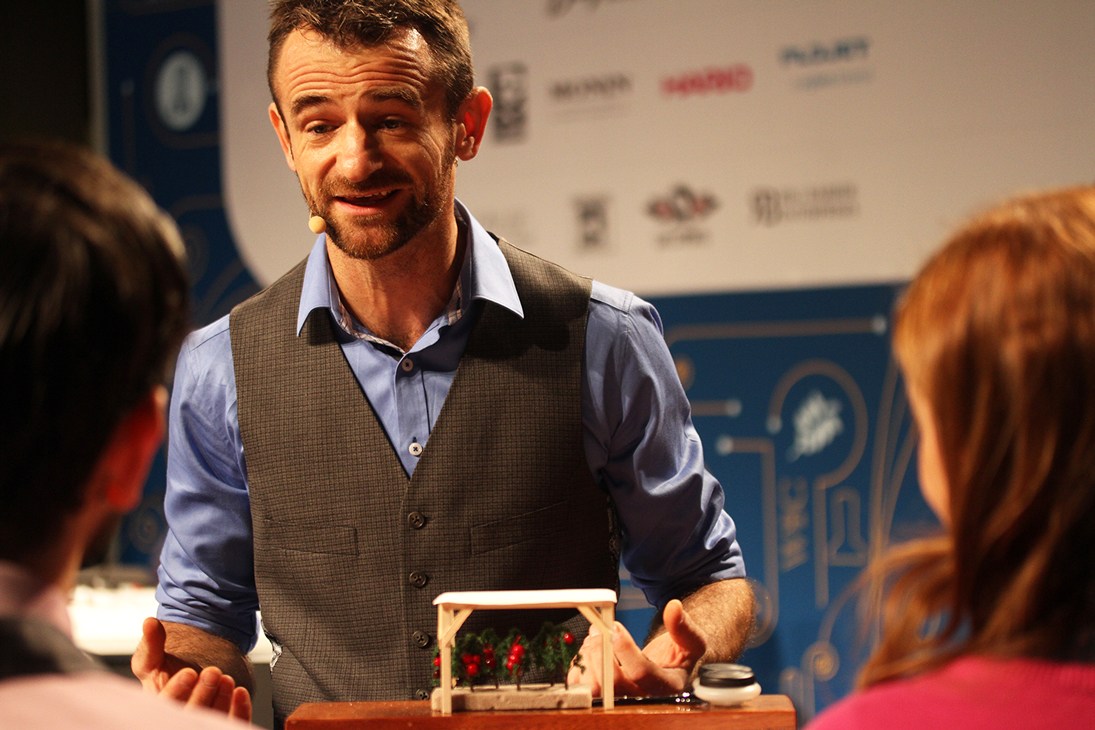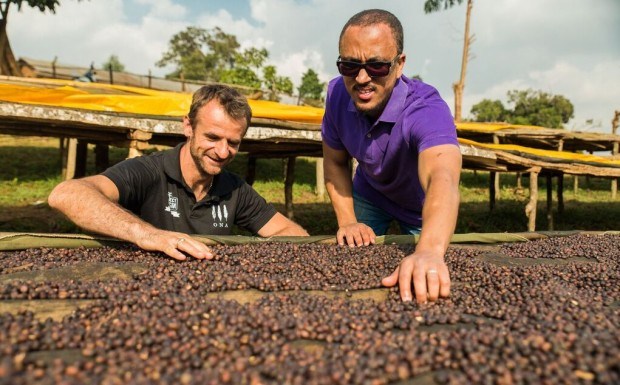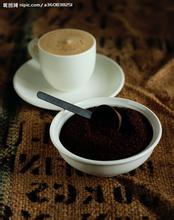Description of flavor of red wine from Hartmann Manor in Panama
For professional baristas, please follow the coffee workshop (Wechat official account cafe_style)
Description of flavor of red wine from Hartmann Manor in Panama
Hartman's story, like his coffee, is legendary. Hartman Manor is located in Chilidge, Santa Clara. The founder's name is Eloise Strauss Hartman. He was born on June 20, 1891 in the Moravilla region of Austria and Hungary in what is now the Czech Republic, and died on May 25, 1970 at the age of 78. Today's Hartman Manor is a family business founded by Latip Hartman (son of Eloise) in 1940. In 1966 Latip married Dinola Sandy of Costa Rica. They have five sons, Latipa Jr., Alan, Alexander, Alice and Kelly. Each family member is responsible for the growth management, harvesting and handling of the coffee and the visit to the manor. A family estate that has grown coffee for more than 100 years is a legend in itself.

The Origin of Red Wine treatment
2015 WBC contestant Sasa brought to the world a Colombian coffee bean that has gone through a similar wine-making process. In addition to the novel taste of beans, the "red wine treatment" that was adopted to treat beans also made editors as curious as many coffee lovers. What on earth is the so-called "red wine treatment"? I believe we all know the traditional coffee treatment methods such as washing, tanning and honey treatment, but what is the red wine treatment of coffee beans?
The red wine treatment of coffee beans, also known as red wine treatment, is inspired by the brewing technology of red wine. At present, only eight estates in Colombia have successfully introduced coffee beans treated with this method to the market. According to the data of these eight estates, we can roughly divide the types of red wine treatment into: acetic acid fermentation (Aerobic aerobic fermentation), lactic acid fermentation (Anaerobuic anaerobic fermentation), mixed fermentation (Mix Fermentation=Aerobic+Anaerobuic).
The traditional treatment method is difficult to control the changeable fermentation degree of coffee beans. But red wine treatment rules can ensure the quality of coffee beans by controlling PH value, even temperature and humidity, and airtight fermentation makes aroma less volatile.
The red wine treatment of coffee beans, also known as red wine treatment, is inspired by the brewing technology of red wine. At present, only eight estates in Colombia have successfully introduced coffee beans treated with this method to the market. According to the data of these eight estates, we can roughly divide the types of red wine treatment into: acetic acid fermentation (Aerobic aerobic fermentation), lactic acid fermentation (Anaerobuic anaerobic fermentation), mixed fermentation (Mix Fermentation=Aerobic+Anaerobuic).

The traditional treatment method is difficult to control the changeable fermentation degree of coffee beans. But red wine treatment rules can ensure the quality of coffee beans by controlling PH value, even temperature and humidity, and airtight fermentation makes aroma less volatile.
Next, let's talk about the specific process of fermentation. First of all, Colombian farmers carefully pick coffee cherries and carefully select coffee red fruits to ensure that among the coffee cherries selected for processing, the percentage of immature cherries is less than 2%, defective beans less than 3%, and floating beans less than 5%.

The selected coffee cherries are placed in a specific container by the farmer's uncle (the beans used by Australian baristas in the Sasa competition are placed in metal containers). But in any case, the container should have a device similar to a red wine fermentation suppository or a single exhaust valve. In this way, carbon dioxide can be spilled through the device to control the concentration of air in the container. At this time, the coffee cherries in the container are fermented with acetic acid, and the beans are relatively bright, clean and citric acid.
According to Sasa's description in the competition, the processor injected carbon dioxide into the container to prevent oxidation from producing volatile acid, a process known as lactic acid fermentation, which produces malic acid and stone acid, which is relatively stable, so the beans fermented with lactic acid have a more mellow acidity, with cheese, nutty and creamy flavor.
As for the description of the difference between water and no water in the treatment of red wine, the editor is still in distress. The above contents still need to be considered, I hope you will discuss it more!
Before writing this article, the editor looked through all the data on the red wine-treated estates in Columbia, analyzed Sasa's description of the beans he chose during the competition, and looked at the mechanism of fruit fermentation in biology. Even so, there is still no detailed description in the data, including the official website description of the bean manor is only limited to the flavor. It is believed that this new way of handling is still in a state of secrecy and has not been popularized. of course, there is no comment.
Even though the details of red wine treatment are not known, the editor roughly summarizes the process description of "red wine treatment" by combining the consultation mentioned above and his own understanding of the wine fermentation process.
Reference materials:
Http://coffeesalon.com/article-1151-1.html
Http://sprudge.com/an-interview-with-sasa-sestic-world-barista-champion-88392.html
Http://collaborativecoffeesource.com/2015/04/17/producer-profile-ana-lucia-martinez/ http://v.youku.com/v_show/id_XOTQxODMwMjAw.html?from=s1.8-1-1.2
Important Notice :
前街咖啡 FrontStreet Coffee has moved to new addredd:
FrontStreet Coffee Address: 315,Donghua East Road,GuangZhou
Tel:020 38364473
- Prev

Introduction to the characteristics of varieties of Colombian coffee beans describing flavor and taste
Colombian coffee beans describe the flavor and taste characteristics of varieties. Colombia is fortunate to have Atlantic and Pacific ports, which helps to reduce the cost of transporting coffee. In South America, she is the only country with this condition. The main production areas of Colombia are in the central and eastern mountains. The most important plantations along the central mountains are located in Medellin,
- Next

Flavor description of Colombian Ramon Coffee Bean introduction of Regional treatment method for Variety characteristics
Colombian Ramon coffee beans flavor description variety characteristics production area treatment method Colombian coffee has a bitter experience, astringent as life, but bitterness is necessary in life, the last fragrance at the root of the tongue is a thorough recollection of the past. Looking back on the bitterness of the past, you will feel more sweet and warm, and want to let the mood stop for a long time in the beginning of awakening.
Related
- Detailed explanation of Jadeite planting Land in Panamanian Jadeite Manor introduction to the grading system of Jadeite competitive bidding, Red bid, Green bid and Rose Summer
- Story of Coffee planting in Brenka region of Costa Rica Stonehenge Manor anaerobic heavy honey treatment of flavor mouth
- What's on the barrel of Blue Mountain Coffee beans?
- Can American coffee also pull flowers? How to use hot American style to pull out a good-looking pattern?
- Can you make a cold extract with coffee beans? What is the right proportion for cold-extracted coffee formula?
- Indonesian PWN Gold Mandrine Coffee Origin Features Flavor How to Chong? Mandolin coffee is American.
- A brief introduction to the flavor characteristics of Brazilian yellow bourbon coffee beans
- What is the effect of different water quality on the flavor of cold-extracted coffee? What kind of water is best for brewing coffee?
- Why do you think of Rose Summer whenever you mention Panamanian coffee?
- Introduction to the characteristics of authentic blue mountain coffee bean producing areas? What is the CIB Coffee Authority in Jamaica?

